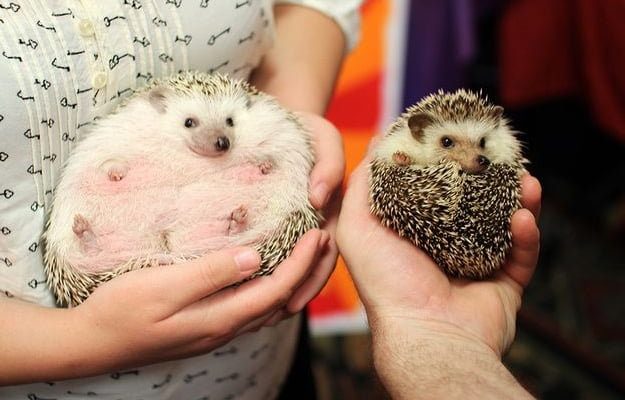![Comparing The Hedgehog Vs. [Similar Species]](https://gudri.com/wp-content/uploads/2025/06/Comparing_The_Hedgehog_Vs___Similar_Species__image_0.jpg)
In this article, we’re going to dive deep into a comparison of the hedgehog and the porcupine. We’ll explore their habitats, diets, behaviors, and how they protect themselves from predators. By the end, you’ll have a clear picture of these fascinating creatures that, while they may appear similar at first glance, tell different stories of adaptation and survival in the wild.
Habitat: Where Do They Live?
Let’s kick things off by talking about where you might find these critters. Hedgehogs are typically found in Europe, Asia, and Africa, preferring gardens, forests, and grasslands. They thrive in areas with plenty of cover, like dense shrubs or flowerbeds, where they can hide from predators and forage for food. Think of them as the introverts of the animal world, enjoying their quiet spaces.
On the flip side, porcupines are primarily located in North America, South America, and in parts of Asia and Africa. They are usually found in forested areas or regions with abundant trees since they rely on bark and leaves for food. If hedgehogs are introverts, porcupines are more like the laid-back barbecuers, often seen enjoying time in open areas where they can munch on their favorite meals.
Living Arrangements
Hedgehogs often dig small burrows or use existing ones made by other animals as their homes. They’re solitary creatures and prefer to stay in their own little space. In contrast, porcupines tend to be more social in some regions, often seen with family members and frequently climbing trees for food or safety.
Diet: What Do They Eat?
When it comes to what’s on the menu, hedgehogs and porcupines have quite different tastes. Hedgehogs are omnivores, which means they enjoy a variety of foods. They munch on insects, worms, fruits, and even small mammals. If you think of them as tiny vacuum cleaners, it’s pretty accurate—they’ll eat almost anything that fits their mouth!
Porcupines, on the other hand, are more specialized in their diet. They primarily dine on vegetation, which includes leaves, bark, and fruits. If hedgehogs are the adventurous snackers, porcupines are like the picky eaters at a buffet, carefully selecting only the best plant parts. The sharp quills of a porcupine sometimes act as a deterrent against predators, making it easier for them to dine in peace.
Feeding Behaviors
Hedgehogs usually forage at night, taking advantage of the cover of darkness to find food. They are quite resourceful, using their keen sense of smell to locate a tasty snack. Porcupines, however, are mostly crepuscular, meaning they’re active during twilight hours. They often climb trees to access a wider variety of food, using their sharp claws and strong limbs to navigate their leafy dining spots.
Defense Mechanisms: How Do They Protect Themselves?
Both hedgehogs and porcupines have developed impressive defenses to keep predators at bay. Hedgehogs rely on their sharp spines, which cover their bodies. When threatened, they curl into a ball, presenting a prickly fortress that’s hard for predators to penetrate. This behavior is not only effective but pretty adorable to watch!
In contrast, porcupines’ quills are more of a last-resort option. While they can’t curl up like hedgehogs, their quills can detach when something tries to bite them. These quills are sharp and barbed, making it painful for attackers. Imagine a porcupine saying, “Bite me, and see what happens!” when in danger. This unique defense ensures that potential threats think twice before going after a porcupine.
Social Interactions and Behavior
Hedgehogs tend to be loners, enjoying their own company and typically coming together only for mating. Porcupines, however, often have social structures, especially when raising their young. Baby porcupines, called kits, stay close to their mothers for a while, learning how to navigate their surroundings and identify safe food.
Reproduction: How Do They Raise Their Young?
When it comes to family life, both species have interesting strategies. Hedgehogs usually mate in the spring, giving birth to a litter of 3 to 7 hoglets after a gestation period of about four to six weeks. The baby hedgehogs are born blind and helpless but grow quickly, learning to forage with their mothers’ guidance.
Porcupines have a longer gestation period, lasting about 7 months, and they typically give birth to a single kit at a time. This means more parental investment in a single offspring. Baby porcupines are born with soft quills that harden over time, a quirky twist that helps them to stay safe from early threats.
Parenting Styles
Hedgehog mothers often leave their young alone for short periods while they hunt for food, which can be risky. However, hedgehogs are excellent at hiding their young, keeping them safe from predators. In contrast, porcupine mothers are quite protective and stay close to their young, teaching them everything they need to survive.
So, whether you find yourself more drawn to the hedgehog with its quaint, spiky exterior or the porcupine with its formidable defenses, both animals offer a glimpse into the amazing diversity of nature. They each have their own unique adaptations that help them thrive in their respective environments.
If you’re ever lucky enough to spot one of these creatures in the wild, take a moment to appreciate what makes them special. They might not be the typical cute and cuddly pets we expect but their fascinating traits are worth knowing about. Plus, who doesn’t love a creature that carries its own armor?

